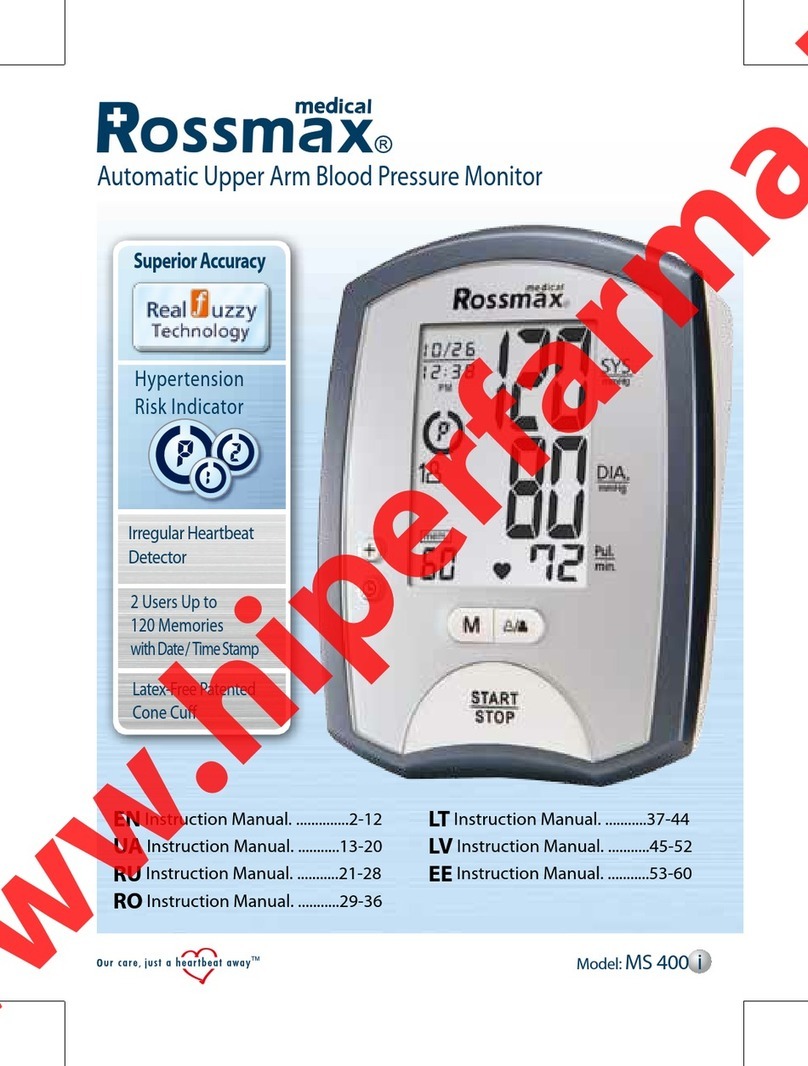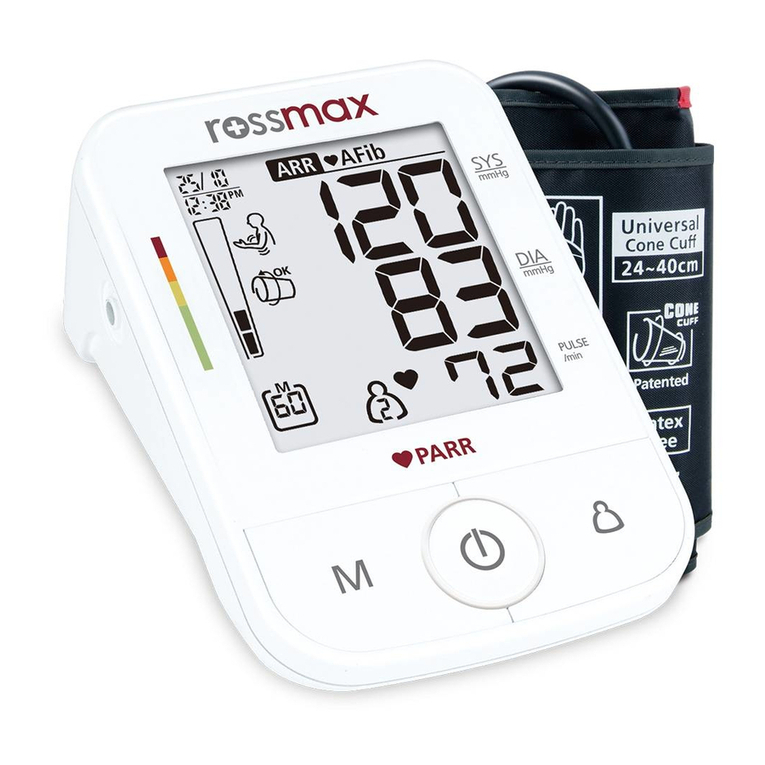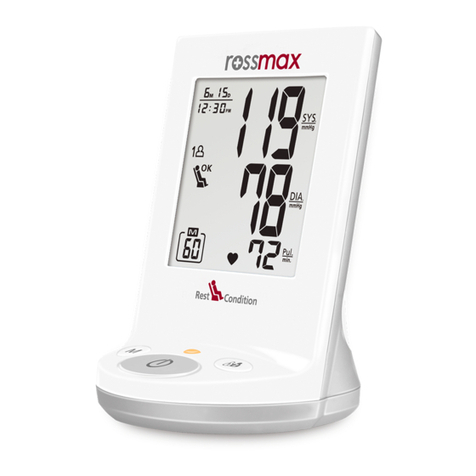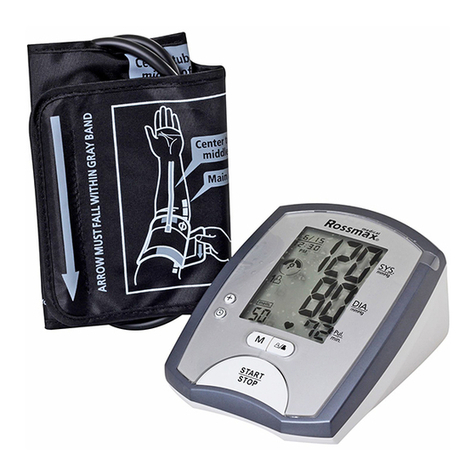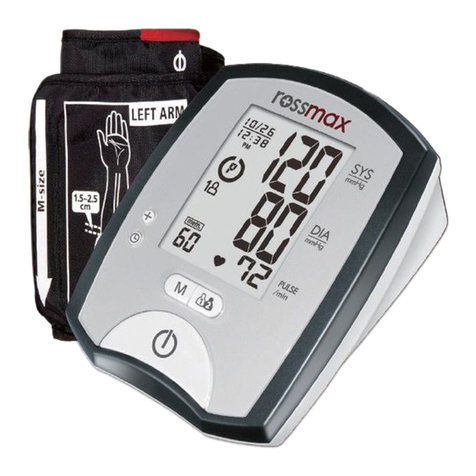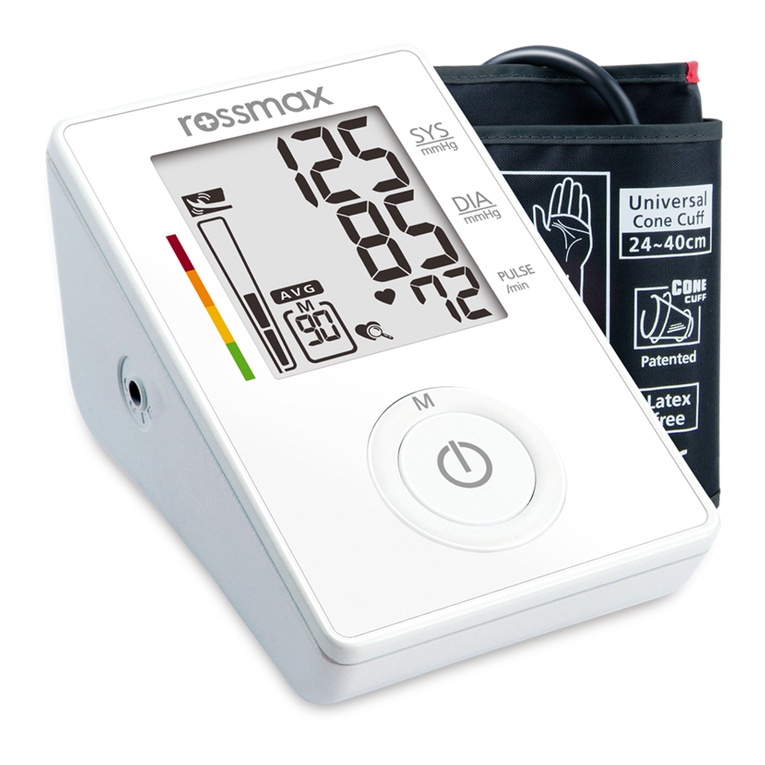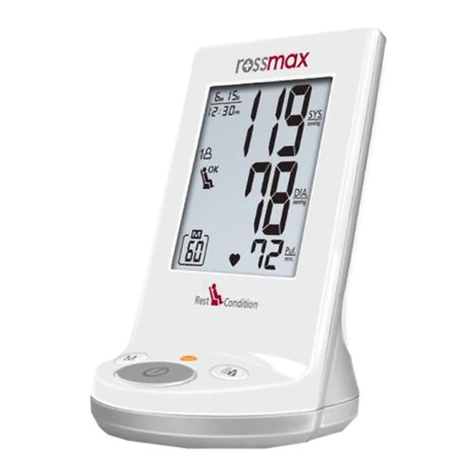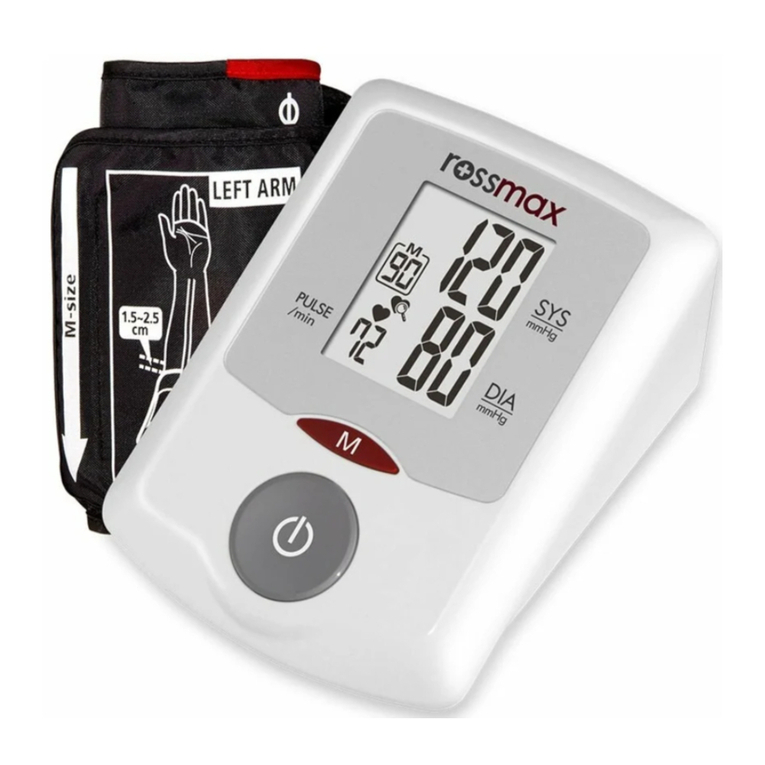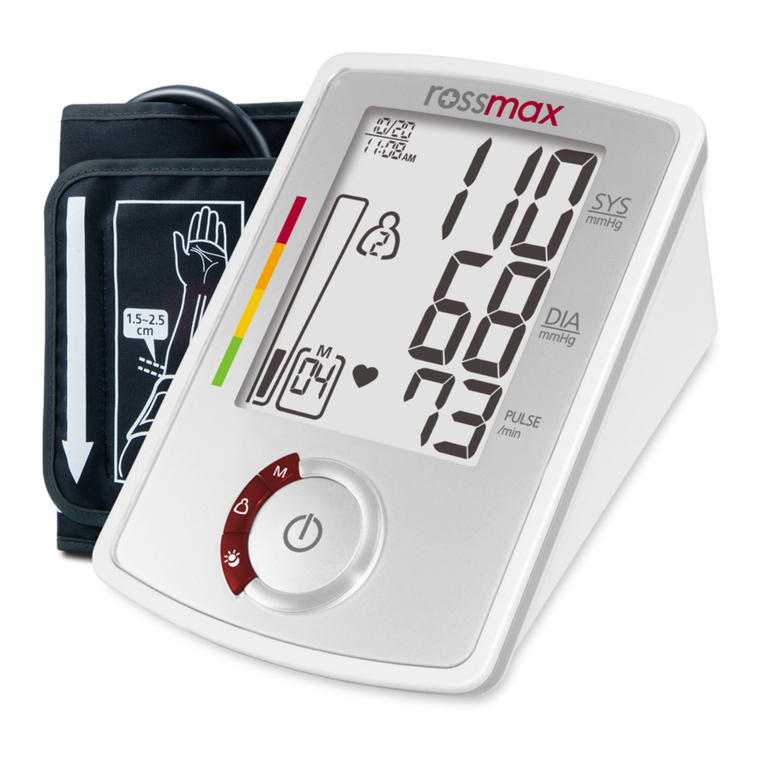4 5
Cautionary Notes
1. The unit contains high-precision assemblies. Therefore, avoid ex-
treme temperatures, humidity, and direct sunlight. Avoid dropping
or strongly shocking the main unit, and protect it from dust.
2. Leaky batteries can damage the unit. Remove the batteries when the
unit is not used for a long time.
3. The unit should not be operated by children so to avoid hazardous
situations.
4 If the unit is stored near freezing, allow it to acclimate at room tem-
perature before use.
5. This unit is not eld serviceable. You should not use any tool to open
the device nor should you attempt to adjust anything inside the de-
vice. If you have any problems, please contact the store or the doc-
tor from whom you purchased this unit or please contact Rossmax
International Ltd.
6. As a common issue for all blood pressure monitors using the os-
cillometric measurement function, the device may have difculty
in determining the proper blood pressure for users diagnosed with
common arrhythmia (atrial or ventricular premature beats or atrial
brillation), diabetes, poor circulation of blood, kidney problems, or
for users suffered from stroke, or for unconscious users.
7. To stop operation at any time, press the START/STOP key, and the air
in the cuff will be rapidly exhausted.
8. Once the ination reaches 300 mmHg, the unit will start deating
rapidly for safety reasons.
9. Electromagnetic interference: The device contains sensitive electronic
components. Avoid strong electrical or electromagnetic elds in the
direct vicinity of the device (e.g. mobile telephones, microwave ov-
ens). These may lead to temporary impairment of measurement ac-
curacy.
10. Dispose of device, batteries, components and accessories according
to local regulations.
11. This monitor may not meet its performance specication if stored or
used outside temperature and humidity ranges specied in Speci-
cations.
Notes on Safety
Warning:
• Self diagnosis of measured results or treatment is dangerous.
Please follow the instruction of the doctor or healthcare pro-
vider.
• If cuff ination does not stop, remove the cuff or pull out the air
tube from the main unit.
• If battery uid gets into your eye or comes in contact with skin,
wash the effected area with water repeatedly. Immediately con-
sult a doctor for treatment.
• Do not wrap the cuff over an arm to which intravenous injection
or transfusion is being conducted, or when otherwise contrain-
dicated.
• Do not connect the air tube or the cuff to other equipment
which is connected to an intra corporeal organ. Air embolisms
may result.
• Do not use this unit in the presence of ammable gas or anes-
thetics or in a high pressure oxygen room or oxygen tent.
• Do not use the battery pack for devices other than for this unit.
• Do not disassemble the battery.
• Do not touch the AC adaptor with wet hands.
• Do not use any cuff other than the models exclusive for this unit.
• Do not use this unit on infants.
• Do not use this unit on patients using a pump oxygenator.
• Do not use an AC adaptor or battery pack no specied for this
unit.
• Do not use a cellular pone near this unit.
• Do not use this unit in a vehicle.
• Do not install the parts and//or instruments not specied for
this unit.
• Do not use a broken power cord or AC adaptor.
• Do not install or store this unit where it may come in contact
with water or liquid medication.
• This is a Class II device with double insulation.

